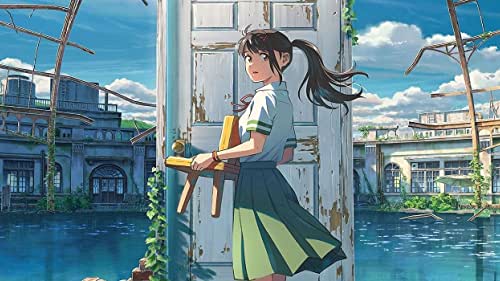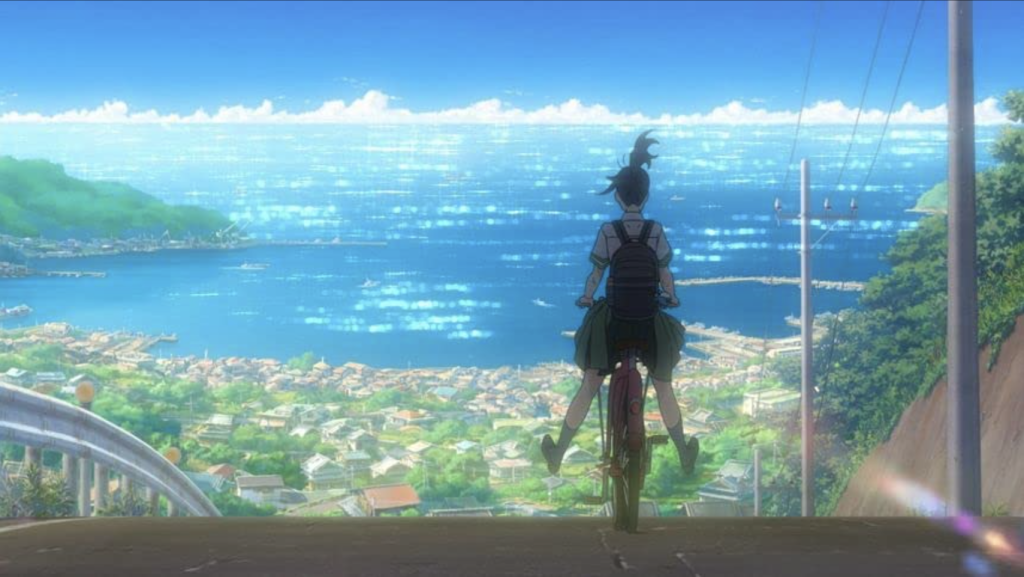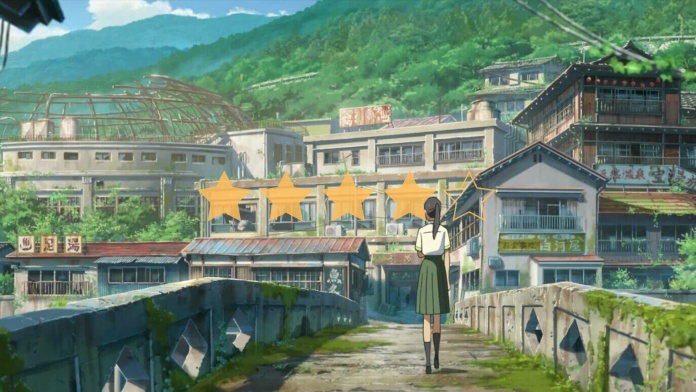Although hundreds of earthquakes are detected in the UK each year, we only feel a few of them. In Japan, however, earthquakes are an inescapable part of life. Suzume, a Japanese animated film, delicately illustrates the connection between earthquakes and Japanese collective memory.
Suzume is written and directed by Makoto Shinkai, whose famous productions include Your Name (2016) and Weathering with You (2019). In Suzume, the eponymous protagonist is a 17-year-old girl who lives with her aunt after losing her mum in the 2011 Tōhoku earthquake, which caused nearly 20 thousand deaths and was one of the most destructive nuclear accidents in human history. One day, she encounters a young man called Souta who is searching for doors in abandoned areas across the country. He is responsible for closing these doors which, if left open, will unleash a giant worm that triggers earthquakes. Suzume and Souta go on an adventure, locking doors across Japan and tracing Suzume’s painful memory of losing her mum.
Suzume is not the only Japanese movie about earthquakes. Fukushima 50 (2020), for example, presents the real-life story of a group of workers voluntarily handling the meltdown of the nuclear plant after the 2011 Tōhoku earthquake. Visualising the disaster with spectacular CGI, it attempts to depict the heroic self-sacrifice of the workers and selfishness of the nuclear company and politicians. However, while most films about natural disasters present the complexity of humanity, Suzume focuses on the significance of earthquakes in Japanese culture.
The film gives a nice overview of the Japanese history of earthquakes, something especially useful to audiences unfamiliar with the subject. All the places Suzume and Souta visit are sites of earthquakes with magnitudes over six, with each location allowing the audience to uncover the history of the disasters as the plot develops. Japanese myths around earthquakes are explored too, with the story of the worm bearing similarity to the idea that earthquakes occur when a gigantic catfish beneath the earth thrashes.
Why does the film change the catfish into a worm? The director admitted that he was inspired by a famous Japanese short story, Super-Frog Saves Tokyo, which subtly illustrates the pessimism of Japanese society after the 1995 Kobe earthquake through a battle between a frog and a worm. Changing the catfish into a worm is a creative adoption of both old myth and modern literature, and retains the spirituality of earthquakes in Japanese tradition. Nature is something sacred and mysterious like a holy goddess under the earth. Humans cannot prevent earthquakes or control the damage nowadays, the film reminds us, despite technological advancement. Weak and small in the face of nature, we should stay humble to our mother Earth—just as Suzume and Souta pray to the goddess of earth while closing the doors.

Although the doors and the worm are sacred, they are located in the earthquake ruins forgotten by the Japanese people. Suzume and Souta need to find the ruins, feel the emotions of the dead souls and listen to their voices in order to close the doors. When Suzume is ‘feeling’ the souls, people’s daily conversations of “good morning”, “bon appétit” and “I don’t want exams” reverberate through the ruins. This scene is strikingly moving, restoring people’s everyday activities on the day of the earthquake. Parents warmly said “goodbye” to their children as they left home, but the children never returned.
There are many well-known ruins in the world, each of them representing a miserable tragedy in human history. They may look lifeless, and gradually become cold numerical data of deaths and economic loss after the disasters, but they store the loving memories of countless living souls. Many people passed away, and their loved ones who survived, like Suzume, are still struggling to work through the sadness years after the disaster. Thus, memory and the weight of history are the central themes of the movie. History is not made up of statistics or political tensions, but is about the souls that live long in people’s memories and love that never fades away.

People deal with their traumatic memories in many different ways. In the first half of the film Suzume always dreams of her mum, and the loss that she’s suffered damages her relationship with her aunt. It’s clear that the memory of the earthquake still hurts her a lot. During the adventure, as she visits earthquake ruins and encounters many people who kindly help her, she gradually understands the responsibility of the survivors; remember those who passed away, acknowledge the brightness of current life, and keep going.
Many people have died due to earthquakes in Japan, but even more people have struggled to live because they survived. The 2011 Tōhoku earthquake and the subsequent nuclear accident are still a collective nightmare for Japanese society. 12 years have gone by, but many people, like Suzume, are suffering from the sadness of losing their loved ones. The memories of the earthquake are painful, but the film tenderly encourages people to face them bravely. Memories will not disappear, even if you try to bury them as earthquake ruins bury towns and cities. Revisit the memories, the film tells us. Acknowledge the trauma, and remember the loving moments. It’s a message applicable to not only Japanese society, but to anyone who has experienced trauma.
Suzume is a heart-warming movie about the weight of memory and history, with artistic visuals and music. It is not just an adventure of stopping earthquakes, but also a journey of discovery, growth and self-healing.
Word by Angel Sun
Support The Indiependent
We’re trying to raise £200 a month to help cover our operational costs. This includes our ‘Writer of the Month’ awards, where we recognise the amazing work produced by our contributor team. If you’ve enjoyed reading our site, we’d really appreciate it if you could donate to The Indiependent. Whether you can give £1 or £10, you’d be making a huge difference to our small team.
